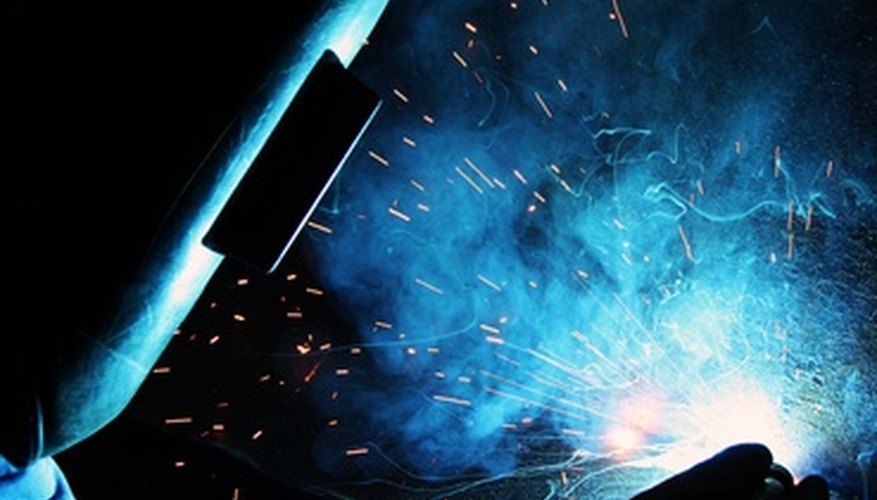Welding is a process that uses an electric arc to melt and join metal. This electric arc creates ultraviolet radiation (UV) at high levels that can result in severe burns, many times without warning. Infrared radiation is also produced by the welding arc and may cause thermal burns from heating the skin surface and tissues immediately below the surface.
- The electrical arc should never be viewed without eye protection to prevent serious corneal damage commonly called "flash burns" or "arc burns."
- (
Cause
A welding burn is caused when unprotected skin is exposed to the excessive levels of UV radiation produced by the electrical arc. When the level of UV exposure is high, it causes type-1 cell-death to the skin, which triggers the slow healing replacement of the skin.
Burn Types
Welding burns are also known as radiation burns and are similar to sunburn. They occur in three basic levels of severity: superficial burns that only affect the top layer of the skin, making it red and tender to touch; partial thickness burns that affect the first and second layers of skin and includes redness and blisters; and full thickness burns, affecting the deeper tissues and fatty tissues, where the skin is often charred.
First-Aid
For superficial and partial thickness burns, first cover or submerge the area in cool water, this cools the burn. Do not apply ice. Cover the burn with dry sterile dressings. Do not use ointments or petroleum-based products such as petroleum jelly, because they hold the heat in and do not allow it to dissipate. If blisters have formed, do not break them.
For full thickness burns get medical help immediately. Do not apply ice or petroleum based products. Remove or loosen clothing and jewellery near the burnt area and cover with a dry sterile dressing if available. Full thickness burns must be treated by medical personnel and are not suitable for home treatment.
- For superficial and partial thickness burns, first cover or submerge the area in cool water, this cools the burn.
- Full thickness burns must be treated by medical personnel and are not suitable for home treatment.
Wound Care
Bathe daily in a clean bathing area, avoiding harsh chemicals. Avoid temperature extremes on burnt area, using mainly lukewarm water to clean area. Follow your wound care instructions of you were treated by medical personnel and watch for signs of infection. Signs of infection may include increased redness, odour, swelling, fever and an increase or change in drainage from burnt area. Over-the-counter products containing aloe vera may be applied to the burn area, assuming the skin is not broken. Commercial sunburn products also work well to provide healing and pain relief on welding burns.
- Bathe daily in a clean bathing area, avoiding harsh chemicals.
- Over-the-counter products containing aloe vera may be applied to the burn area, assuming the skin is not broken.
Prevention
Welders can protect themselves from IR and UV burns by wearing a welder's helmet (or glasses) and protective clothing and gloves. To prevent facial burns, wear a full face helmet at all times when welding. High-blocking sunscreen can also be applied to any areas of exposed skin.
- The electrical arc should never be viewed without eye protection to prevent serious corneal damage commonly called "flash burns" or "arc burns."
- (
Warnings
The electrical arc should never be viewed without eye protection to prevent serious corneal damage commonly called "flash burns" or "arc burns." (see Reference 1) If you suspect eye burns or your burn is into the deeper tissues, get medical help immediately. Familiarise yourself with the different levels of burns and the first-aid response for each through sources such as the first-aid burn guide produced by the Mayo Clinic. (see Resource 1)
- The electrical arc should never be viewed without eye protection to prevent serious corneal damage commonly called "flash burns" or "arc burns."
- (
